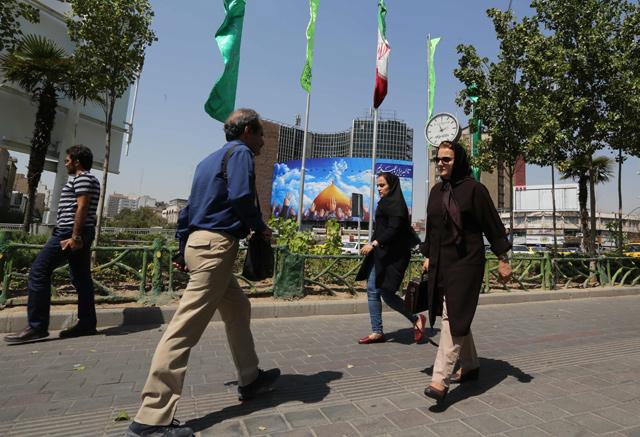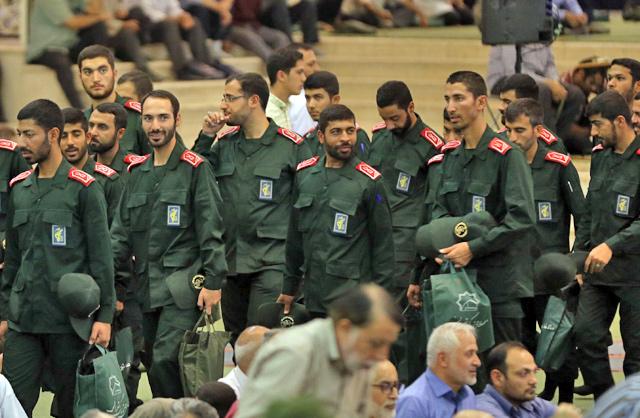You are here
Iran-US ties since Trump came to power
By AFP - Aug 27,2019 - Last updated at Aug 27,2019

People walk in the Vali Asr Square in the Iranian capital Tehran, on Tuesday (AFP photo)
TEHRAN — Relations between Tehran and Washington have spiralled since US President Donald Trump came to power and promptly quit the international deal on Iran’s nuclear programme, reimposing sweeping sanctions on the country.
Here is a recap.
‘Isolate’ Iran
In a landmark address to Middle Eastern leaders in Saudi Arabia on May 21, 2017, just months after taking office, Trump urges nations to work together to isolate Iran “until the Iranian regime is willing to be a partner for peace”.
“From Lebanon to Iraq to Yemen, Iran funds, arms and trains terrorists, militias and other extremist groups that spread destruction and chaos across the region.”
The Iranian government, Trump claimed in an address to the United Nations on September 19, 2017, “has turned a wealthy country with a rich history and culture into an economically depleted rogue state whose chief exports are violence, bloodshed and chaos”.
Nuclear deal walkout
Trump on May 8, 2018 pulls the US out of the nuclear pact between world powers and Iran, calling it “defective at its core”.
The move heralds the reinstatement of US sanctions on Iran and companies with ties to it.
Washington warns other countries to end trade and investment in Iran and stop buying its oil, or face punitive measures.
On August 7, Washington reimposes a first set of sanctions that involve freezing financial transactions and imports of raw materials, as well as penalties on purchases in the car and commercial aviation industries.
A second wave of US sanctions comes into force on November 5, described by Washington as the “toughest” yet.
US drone shot down
On June 20, Iran’s Revolutionary Guard say they shot down a US spy drone which allegedly violated Iranian airspace. The Pentagon denies the unmanned aircraft entered Iran’s airspace.
The next day Trump approves a retaliatory strike, but cancels it at the last minute.
On June 24 the US imposes “hard-hitting” financial sanctions on Iran’s supreme leader Ayatollah Ali Khamenei and senior Iranian military leaders.
Enriched uranium
Iran announces on July 1 that it has exceeded a limit on its enriched uranium reserves set by the nuclear deal.
On July 7, Iran announces it will begin enriching uranium to a level prohibited by the deal “in a few hours”.
Tehran also threatens to abandon more nuclear commitments in “60 days” unless a “solution” is found with the deal’s remaining parties.
A day later, Iran says it is enriching uranium to a level of at least 4.5 per cent.
Gulf tensions
On July 18, Trump says the US military has taken down an Iranian drone that came dangerously close to one of its naval vessels in the Strait of Hormuz. Iran denies the claim.
On July 22, Iran says it has dismantled a CIA spy ring, arresting 17 suspects between March 2018 and March 2019 and sentencing some of them to death. Trump dismisses the claim as “totally false”.
Diplomatic push
On August 25, Tehran’s top diplomat causes a stir at the G-7 summit in France by making an unscheduled appearance, meeting with French President Emmanuel Macron on the sidelines.
The next day Trump says he is prepared to meet with his Iranian counterpart Hassan Rouhani.
“If the circumstances were correct, I would certainly agree to that,” says Trump, considering it realistic to hold such a meeting “in the next few weeks”.
On August 27, Rouhani calls on Washington to “take the first step” towards a such a meeting by lifting all sanctions against Iran.
Related Articles
DUBAI () — Tensions in the Gulf have escalated in recent months amid a deepening stand-off between Iran and United States over Teh
TEHRAN — Iran said Monday it has exceeded a limit on its enriched uranium reserves under a 2015 nuclear deal that has edged towards collapse
TEHRAN — A top Iranian diplomat expressed disappointment on Sunday after meeting a British Foreign Office minister amid escalatin

















